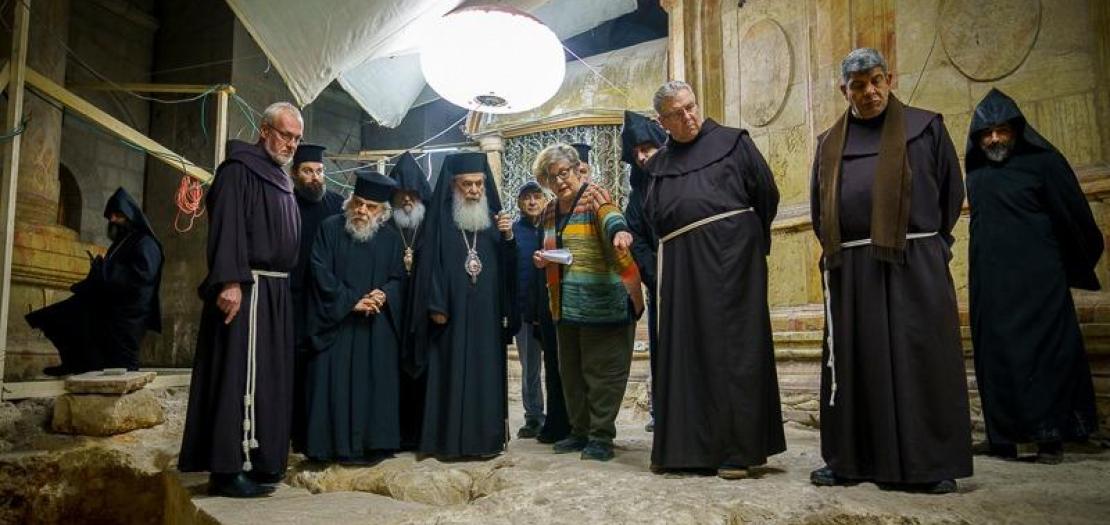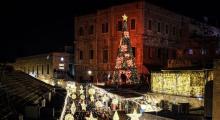Issued by the Catholic Center for Studies and Media - Jordan. Editor-in-chief Fr. Rif'at Bader - موقع أبونا abouna.org

On 11 January 2023, on the occasion of the visit of the Community leaders to the archaeological site in the complex of the Holy Sepulcher in Jerusalem, the excavation works in progress were presented by the Department of Ancient Sciences of the Sapienza University of Rome . The archaeological investigations are connected with the restoration of the floor of the basilica and take place in different and progressive areas, so as not to hinder the performance of the religious functions of the various confessions and the visit of the complex by pilgrims.
Excavations began in May 2022 and have so far involved part of the north nave, the northern half of the Rotunda and the connecting area between the two areas. They are currently concentrating in the southern portion of the Rotunda, the object of the visit. The work takes place in a continuous cycle, day and night, and the group of archaeologists who work in Jerusalem makes use of the remote support of the rest of the team located in Rome, where the processing of the materials produced takes place, which is made in real time.
In the southern portion of the Rotonda the quarry front was brought to light, which, as in the other excavation sectors, slopes from the north-west to the south-east, with even very significant differences in height; its depth in this area ranges from a few cm to over 2 m. The traces left by the detachment wedges and the cuts for the removal of the blocks, even of large dimensions, are clearly evident.
The foundations and substructures of the Roman age rest directly on the quarry bank, to be attributed to the structures connected with the works promoted by the emperor Hadrian (117-138) in the area, where written sources mention the presence of a temple structure. These structures appear defunctionalized and reduced to a few rows, and at least partially affected by combustion phenomena. Most of the Roman masonry had already been brought to light during the investigations carried out by Ch. Couasnon in 1974 and also documented by V. Corbo. On the occasion of the current excavations, the entire previously investigated area was brought to light, by removing the concrete slab that covered it, so as to be able to document and re-read it in connection with the new archaeological finds.
The heavy destruction of the Roman buildings is also due to the lowering of the altitude of the whole area in which the Rotonda stands when, in the first decades of the fourth century, the decision was made to bring to light and monumentalize the venerated tomb, identified with that of Christ. Most of the Roman structures were destroyed, and the rock was cut down to the base of the tomb, originally dug into the side of a hill, to create a flat area around it. The remains of a first monumentalization of the tomb were found under the current nineteenth-century aedicule. It is a circular floor in reused marble, worked with care, the circumference of which embraces the entire area in which the tomb stands.
The remains of two pavement phases were also found, both in opus sectile . The oldest uses slabs of white and gray marble, and a portion of it had already been brought to light during the excavations at Couasnon; it rests directly on the rocky bank and, where this is at a lower altitude, on earthworks and preparatory stratigraphies. A second one, at a higher altitude, is made of reused marble, including porphyry and abundant cipollino; sporadic fragments of this pavement had also been found in the northern area of the Rotunda.
The complexity of the stratigraphy determines the need to continue the archaeological investigations and the study of the materials found, so as to be able to clarify sequences and chronologies and therefore propose philologically reliable reconstructions.







